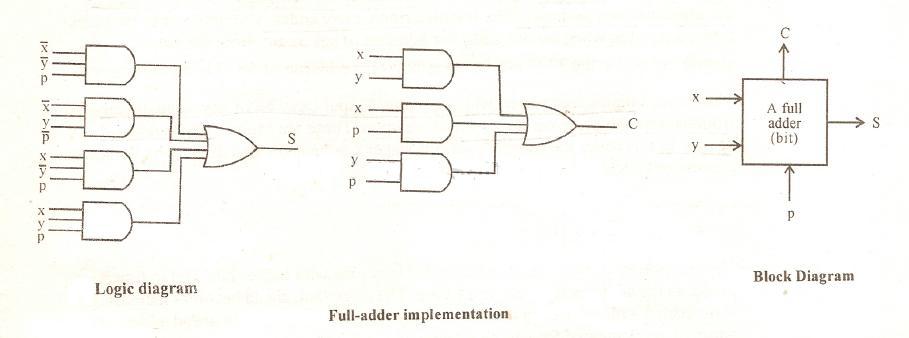
#ADDER SUBTRACTOR CIRCUIT DIAGRAM FULL#
We said before that the only difference between a full adder and a full subtractor was the inversion of one of the inputs. B IN) + ( X.Y.B IN) + (X.Y.B IN)ī OUT = X AND Y OR (X XOR Y)B IN = X.Y + (X ⊕ Y)B IN An n-bit Binary SubtractorĪs with the binary adder, we can also have n number of 1-bit full binary subtractor connected or “cascaded” together to subtract two parallel n-bit numbers from each other. Then the Boolean expression for a full subtractor is as follows.ĭ = ( X.
#ADDER SUBTRACTOR CIRCUIT DIAGRAM PLUS#
The two single bit data inputs X (minuend) and Y (subtrahend) the same as before plus an additional Borrow-in ( B-in) input to receive the borrow generated by the subtraction process from a previous stage as shown below. The main difference between the Full Subtractor and the previous Half Subtractor circuit is that a full subtractor has three inputs. Then we need to produce what is called a “full binary subtractor” circuit to take into account this borrow-in input from a previous circuit. One major disadvantage of the Half Subtractor circuit when used as a binary subtractor, is that there is no provision for a “Borrow-in” from the previous circuit when subtracting multiple data bits from each other. Then all that is needed to convert a half adder to a half subtractor is the inversion of the minuend input X. The two Boolean expressions for the binary subtractor BORROW is also very similar to that for the adders CARRY.


If we compare the Boolean expressions of the half subtractor with a half adder, we can see that the two expressions for the SUM (adder) and DIFFERENCE (subtractor) are exactly the same and so they should be because of the Exclusive-OR gate function. Subtracting a “1” from a “1” results in a “0”, but subtracting a “1” from a “0” requires a borrow. As binary notation only has two digits, subtracting a “0” from a “0” or a “1” leaves the result unchanged as 0-0 = 0 and 1-0 = 1. Binary Subtractionīinary Subtraction can take many forms but the rules for subtraction are the same whichever process you use. The subtraction of one binary number from another is exactly the same idea as that for subtracting two decimal numbers but as the binary number system is a Base-2 numbering system which uses “0” and “1” as its two independent digits, large binary numbers which are to be subtracted from each other are therefore represented in terms of “0’s” and “1’s”. Simple school math’s, borrow a 10 if needed, find the difference and return the borrow. This “borrowed” 10 is then return back to the subtrahend of the next column once the difference is found. We can not directly subtract 8 from 3 in the first column as 8 is greater than 3, so we have to borrow a 10, the base number, from the next column and add it to the minuend to produce 13 minus 8.


 0 kommentar(er)
0 kommentar(er)
